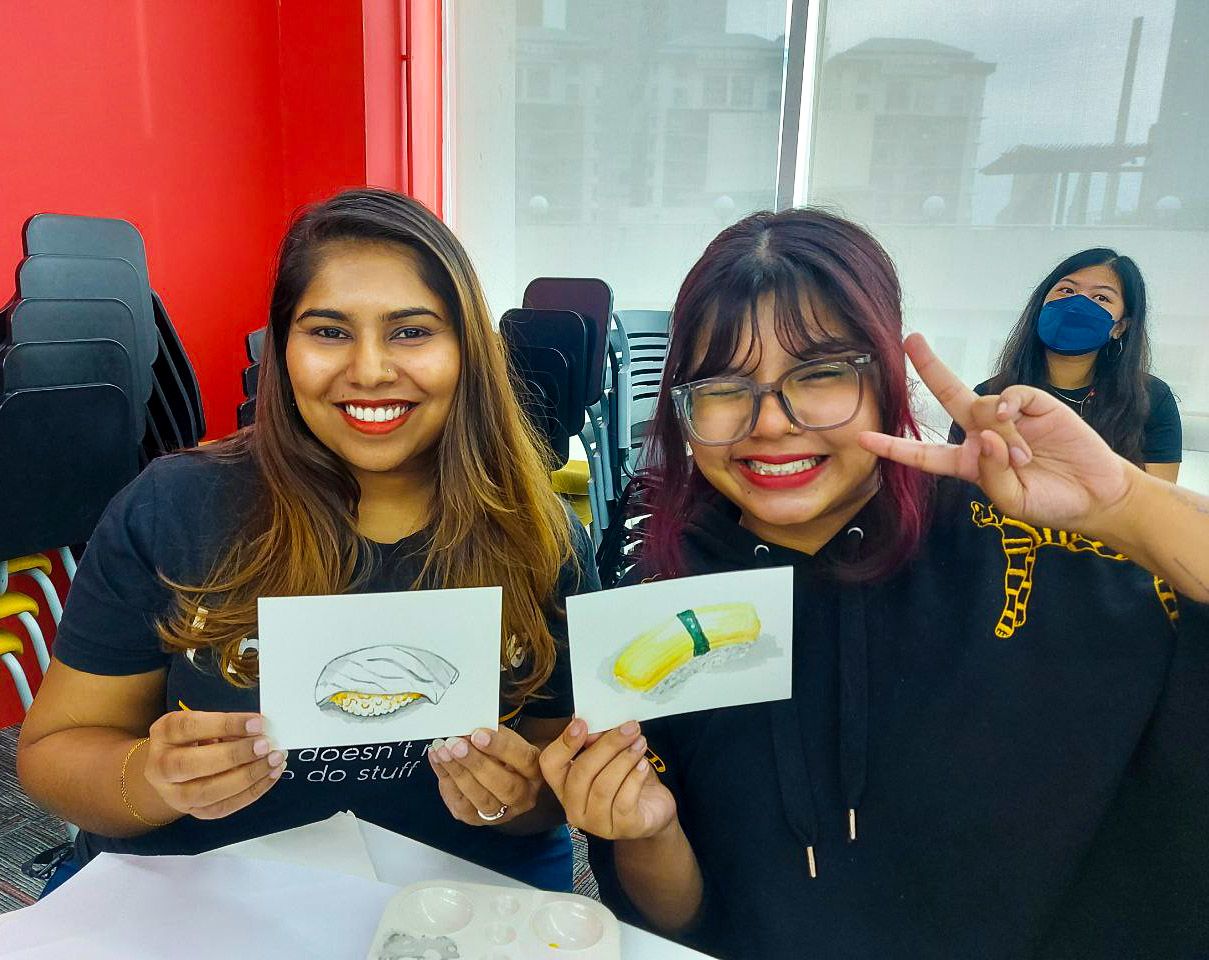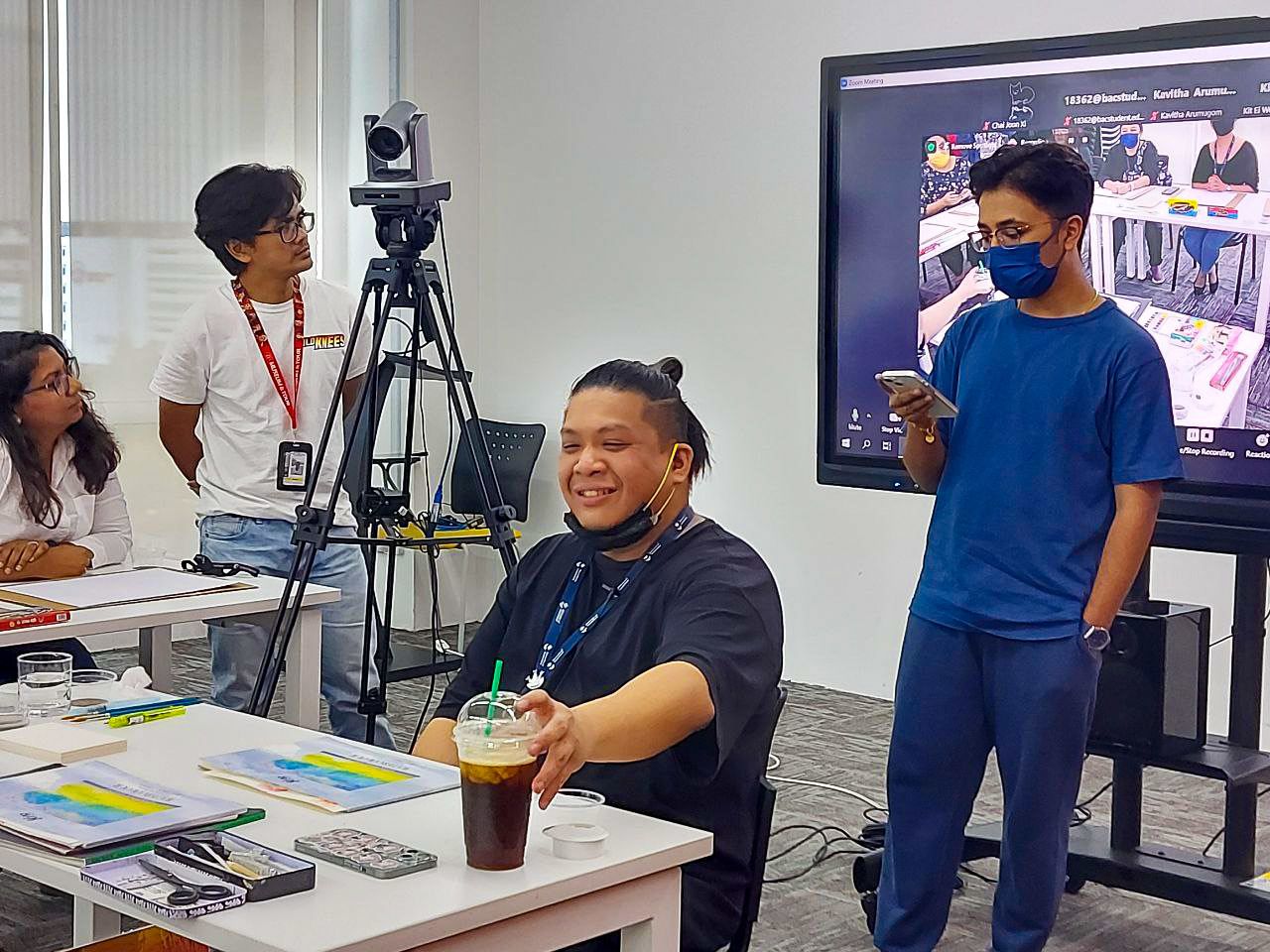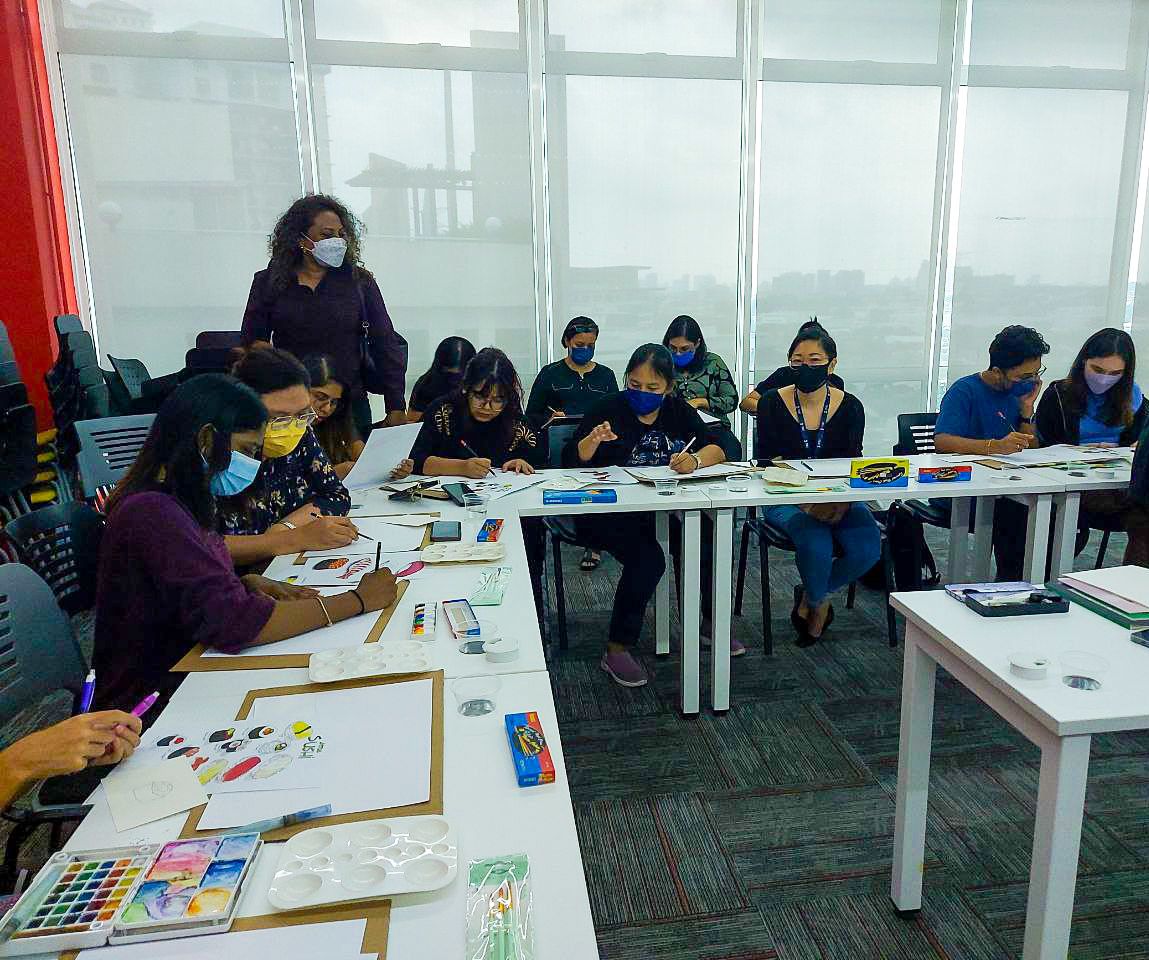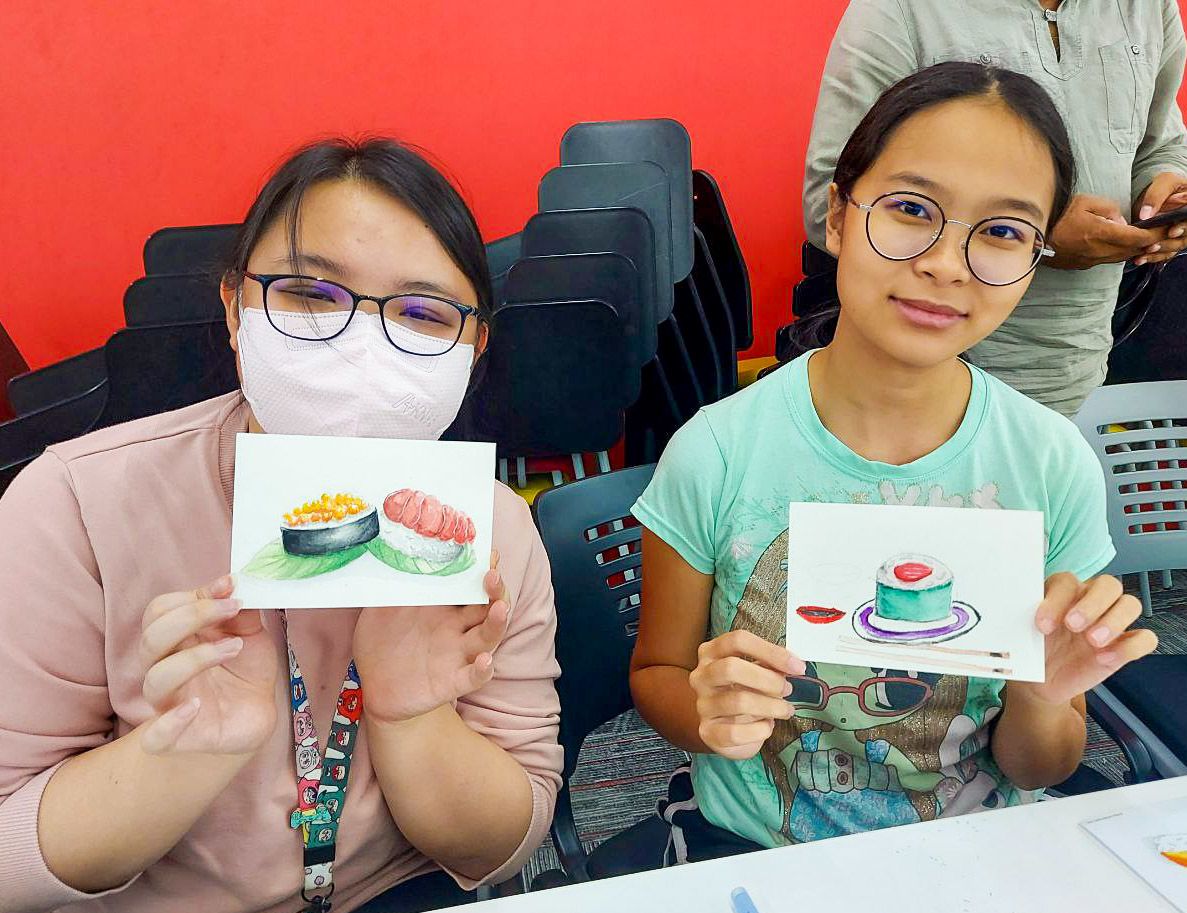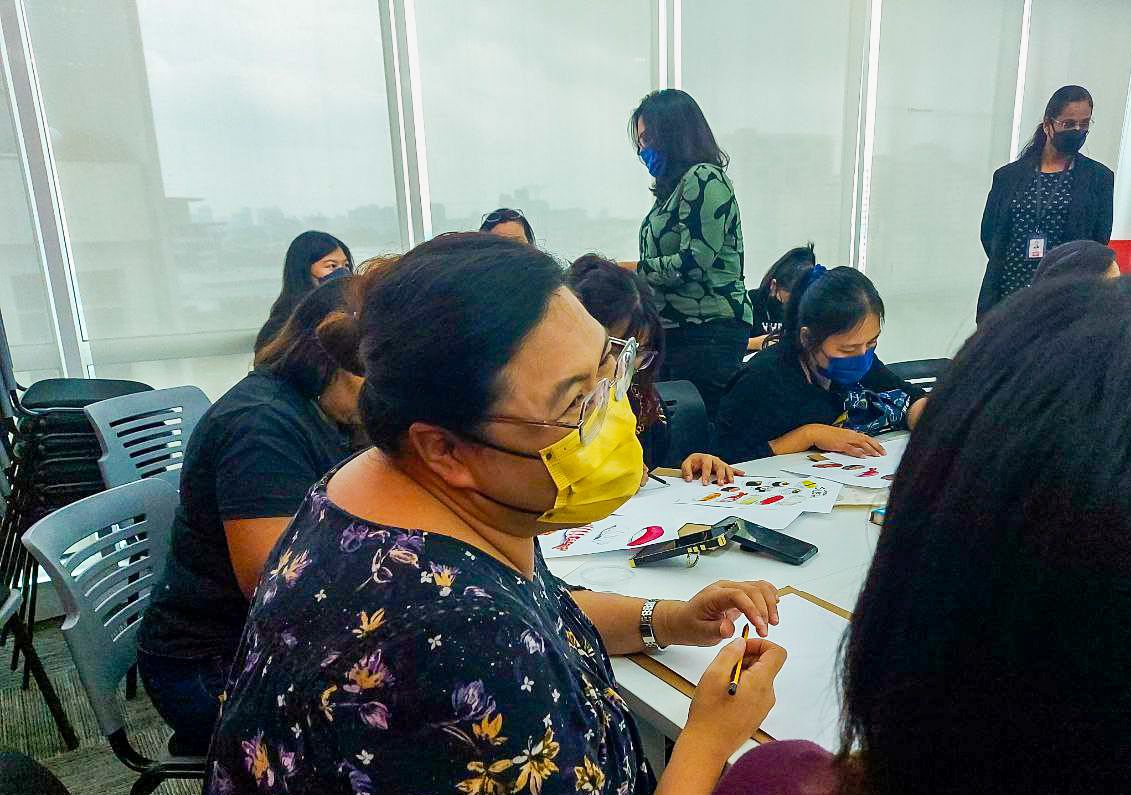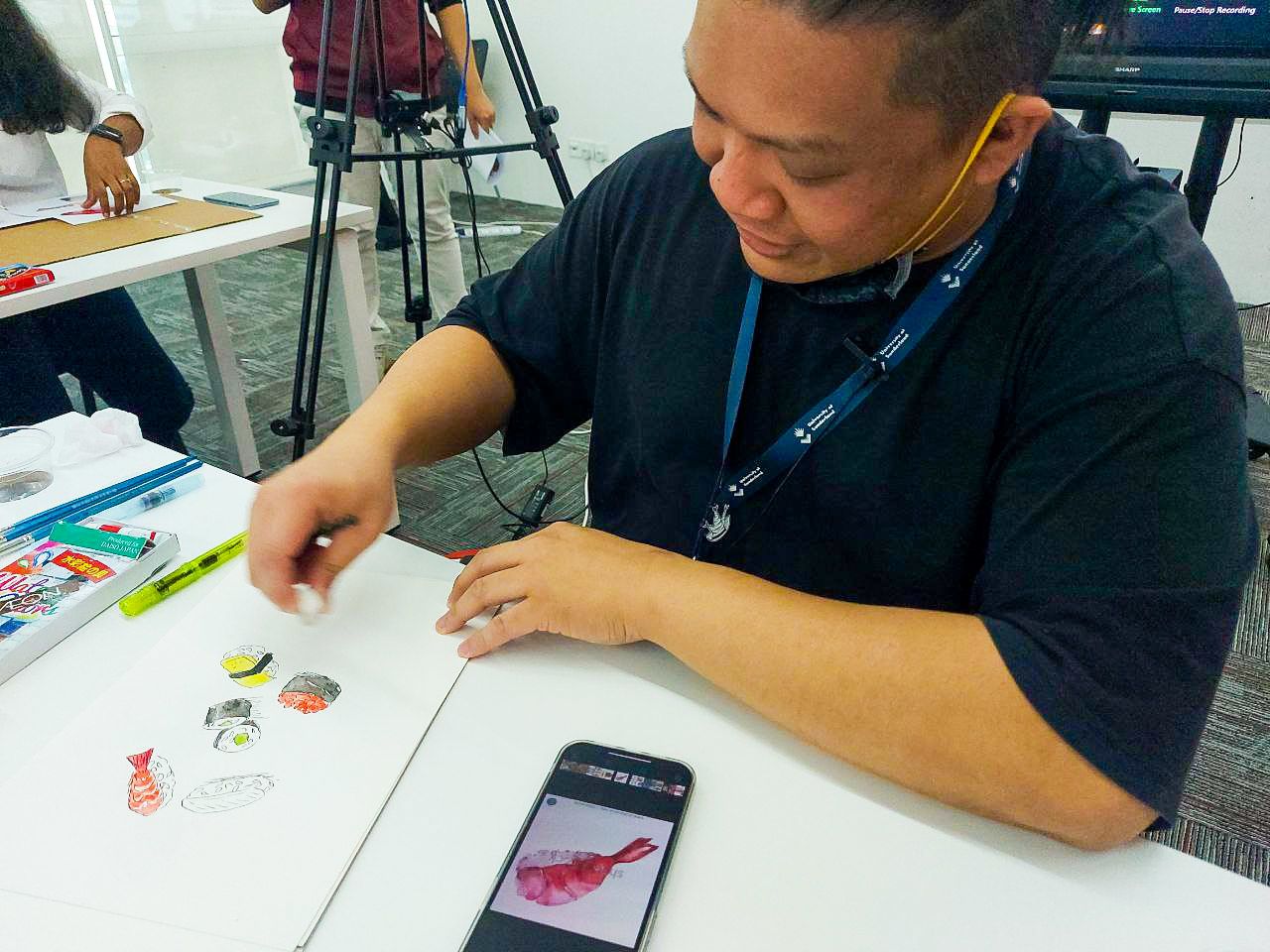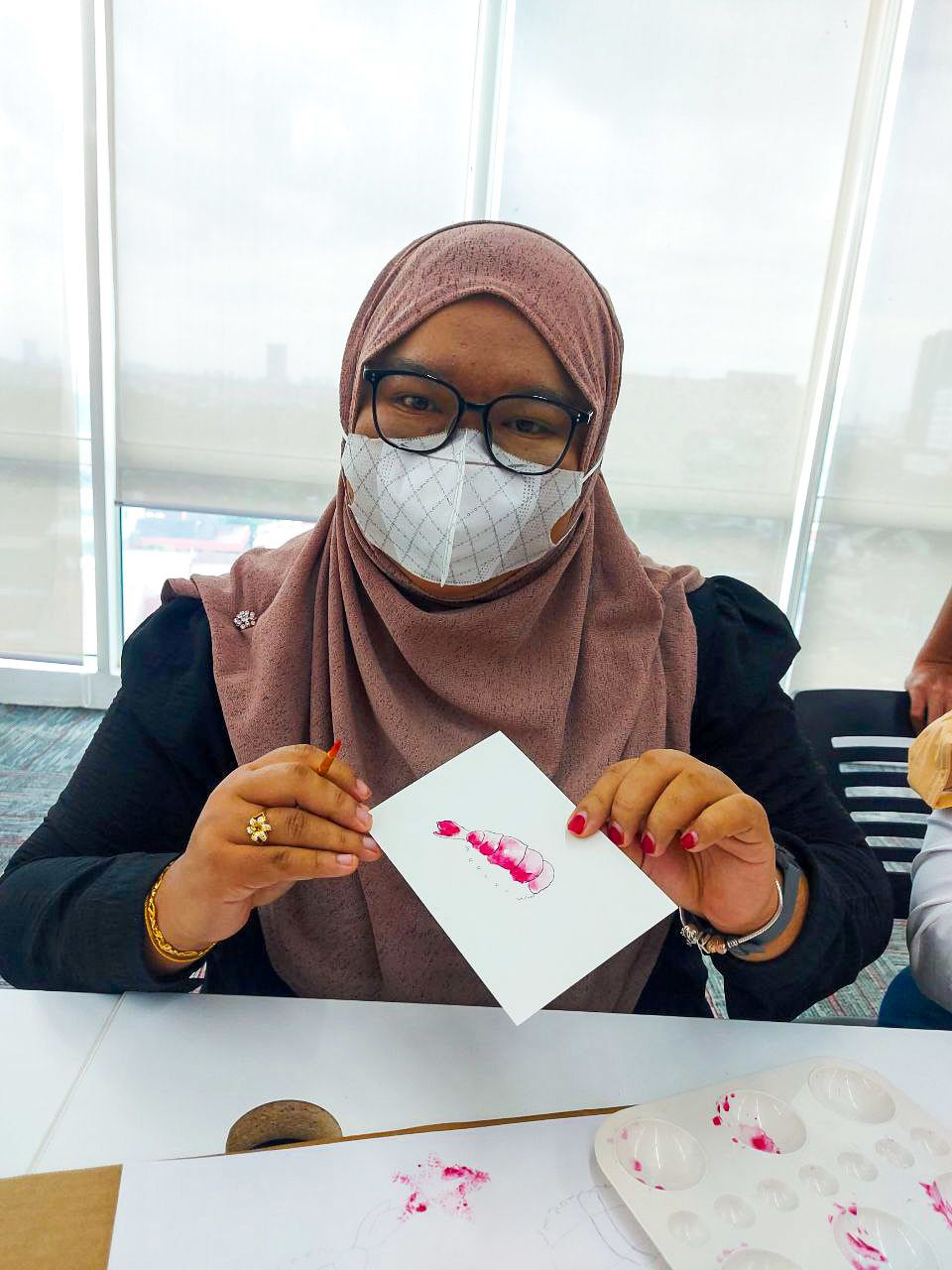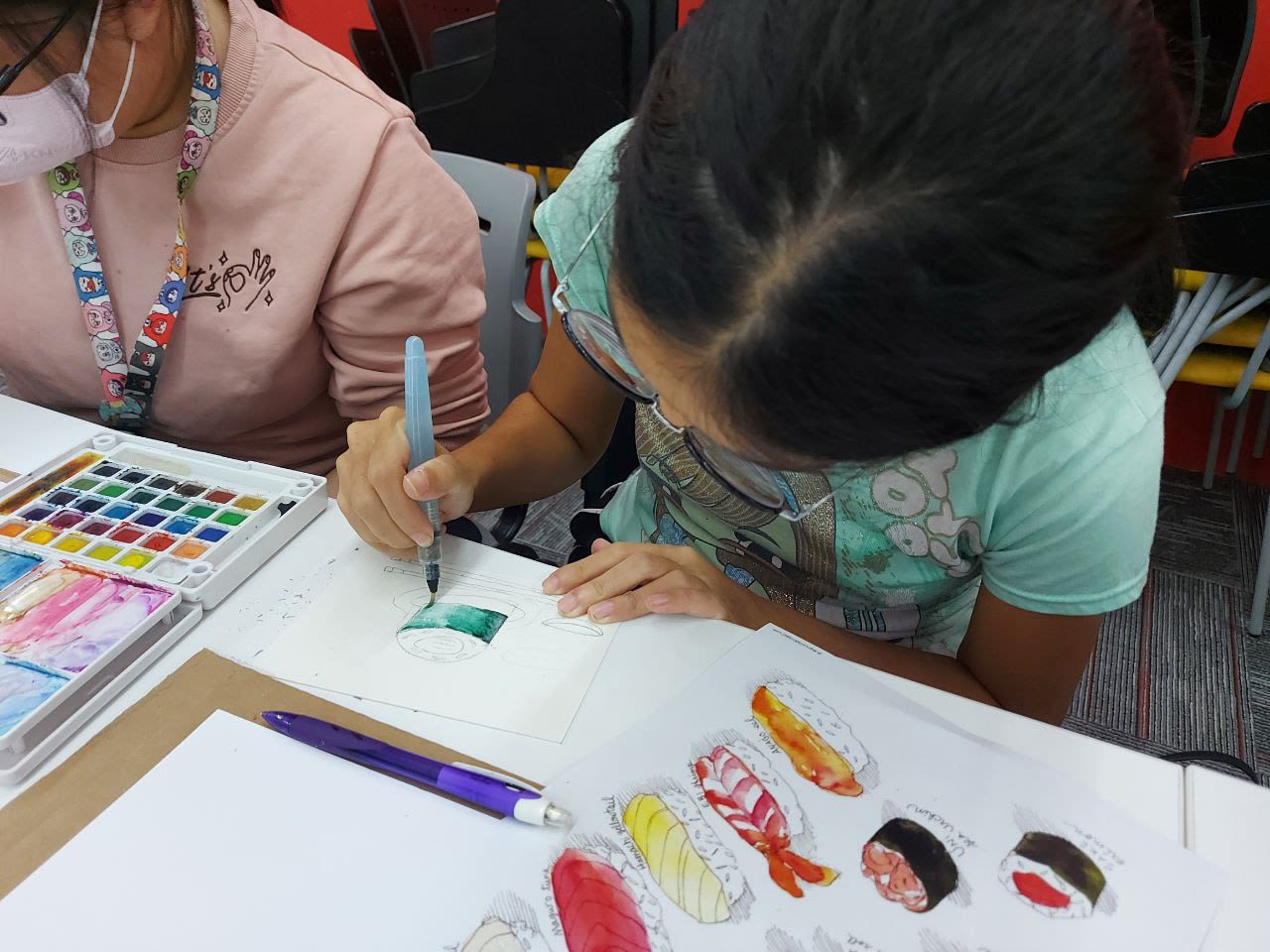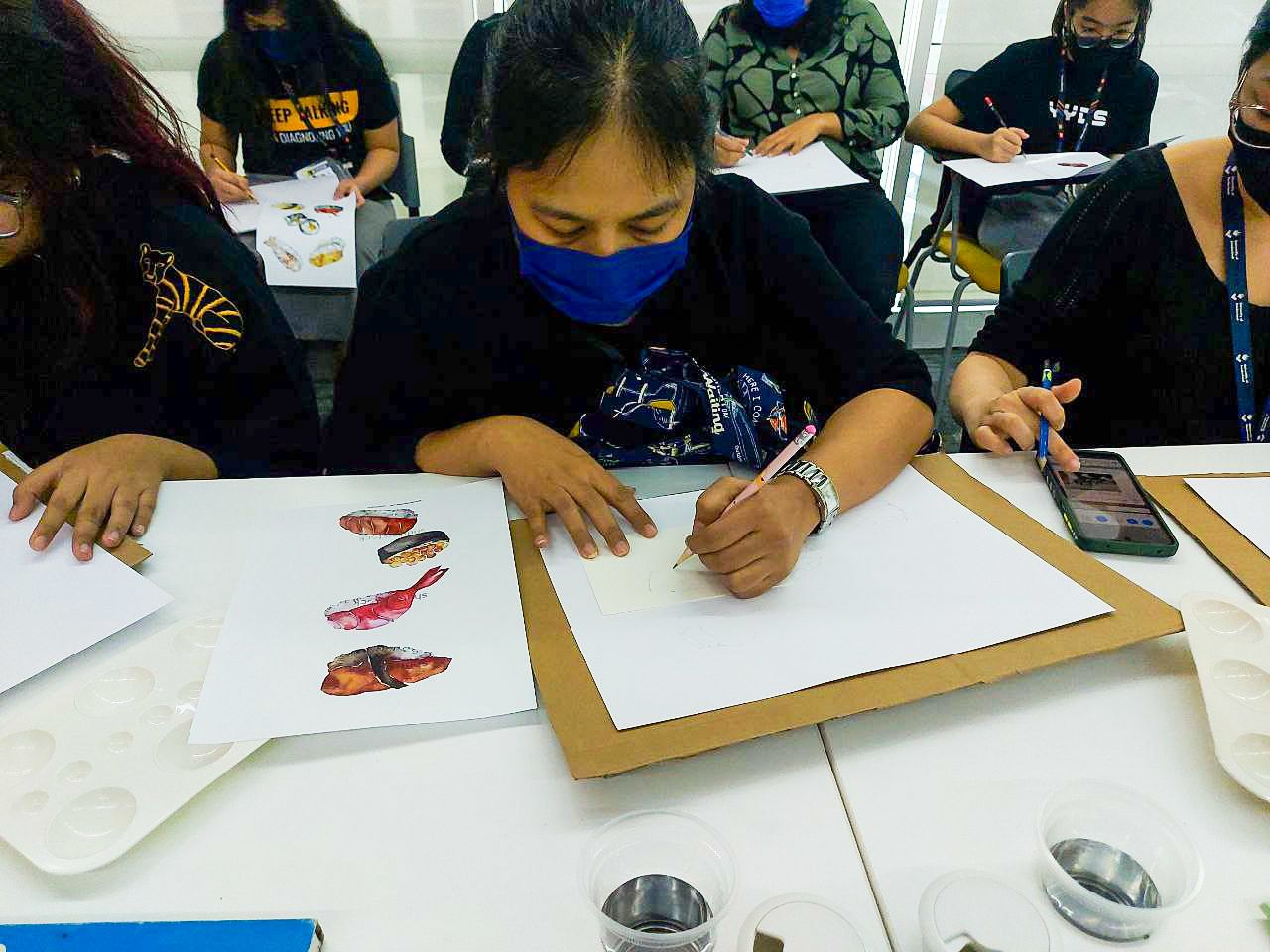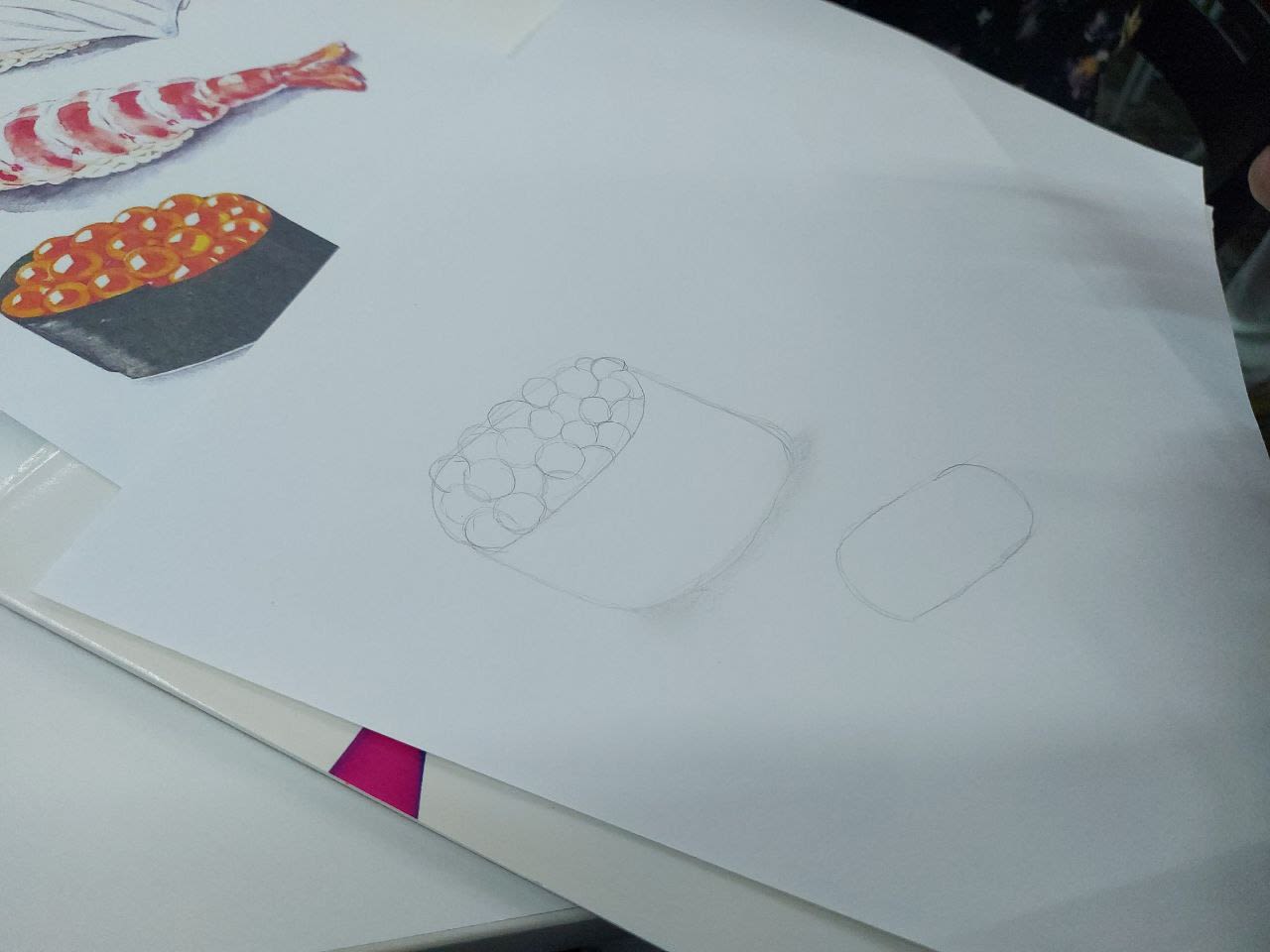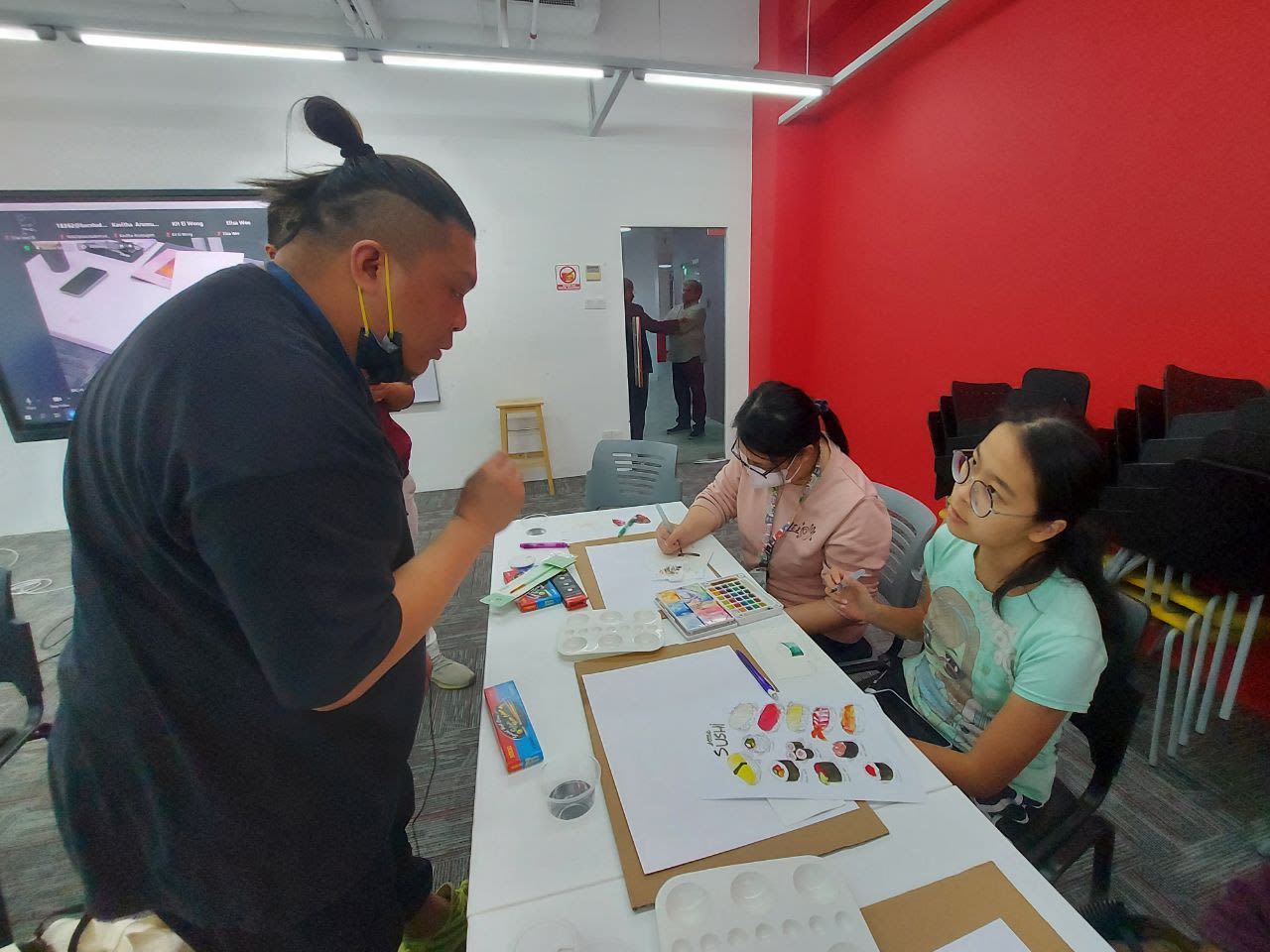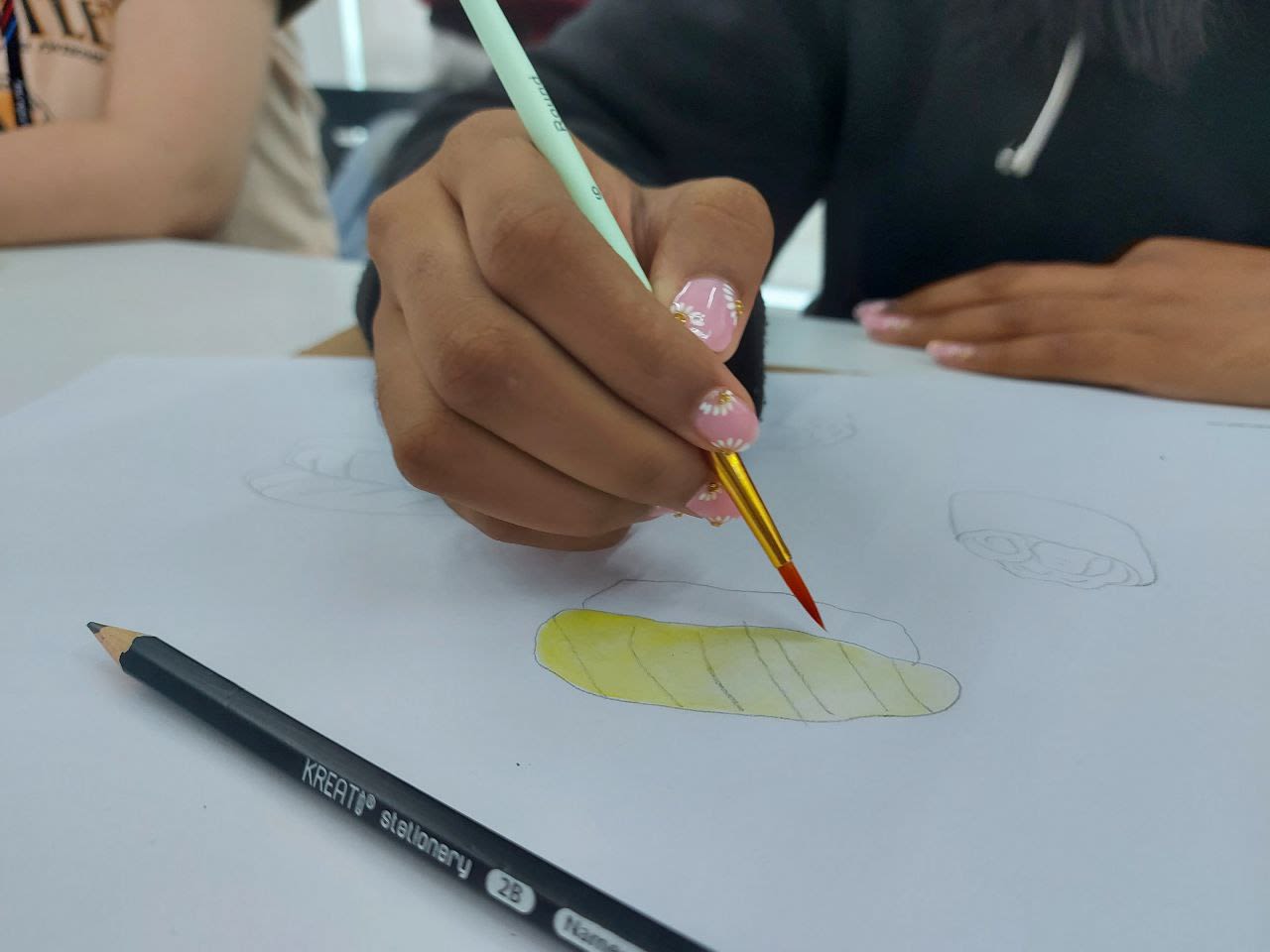Watercolor Painting 101: Types of Sushi
A Fun and Imaginative Session by BAC’s Skills Club
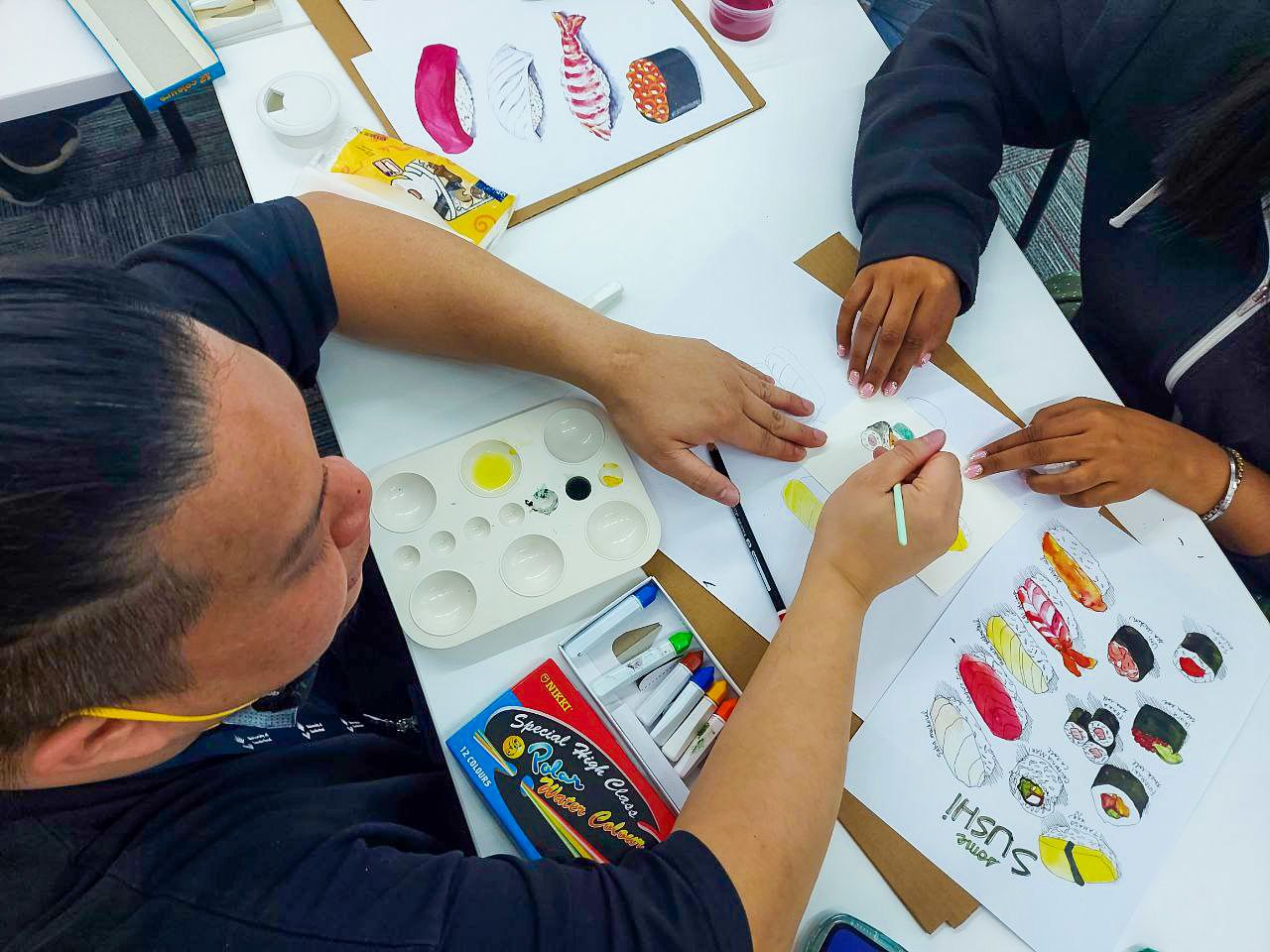
On Wednesday, 22nd of September, students and staff alike got to experience the perfect way to break up the week with a whimsical watercolour painting tutorial organised by BAC’s Skills Club, and lead by Mr. Joseph Yap of IACT College. The tutorial had all of us salivating and craving Japanese food for our dinner plans.
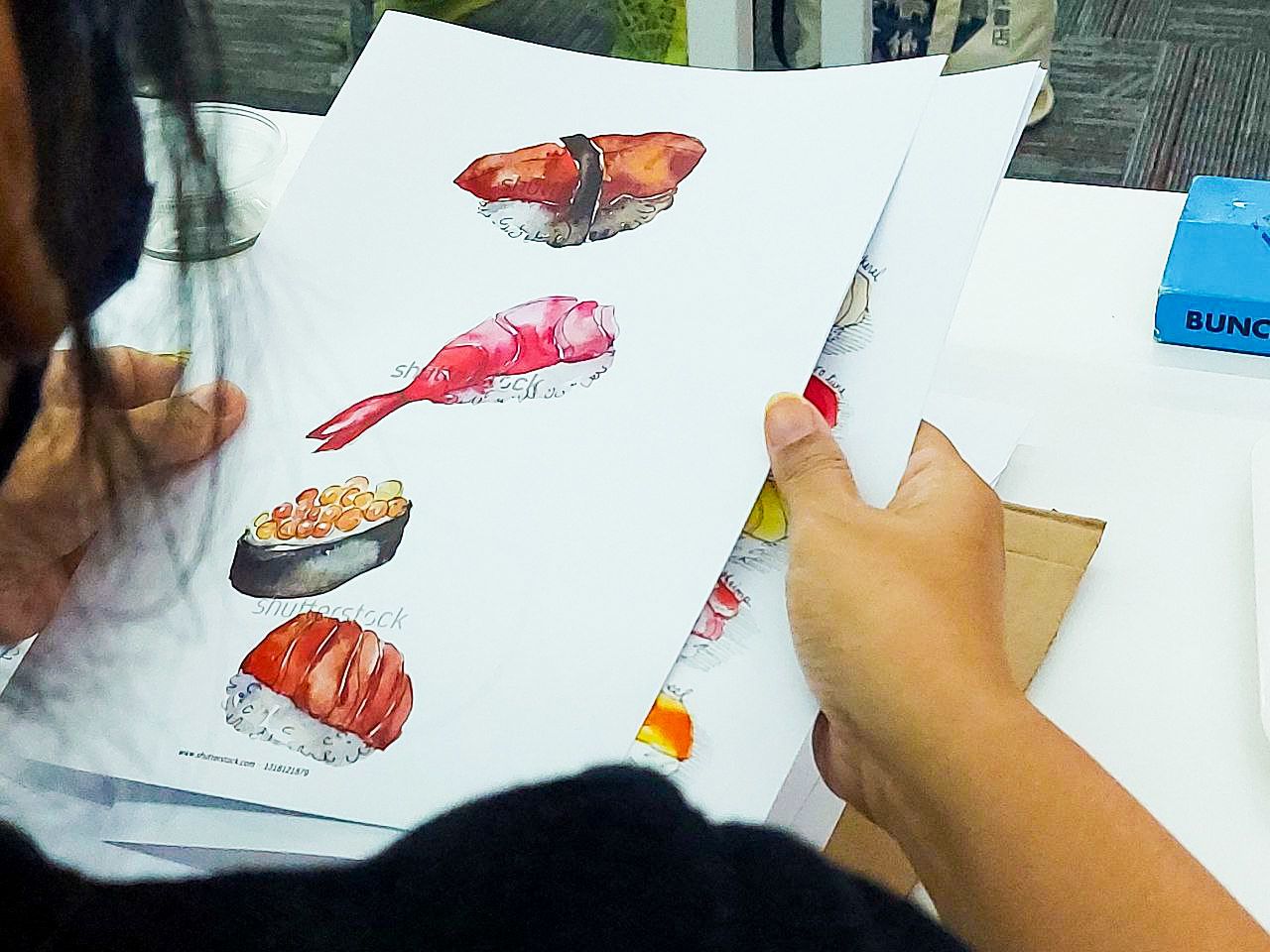
The session started off with an introduction to watercolour as an artistic medium and the art of observation with our deliciously delightful subject matter.
Mr Joseph was wonderful at making everyone comfortable with the artistic process, helping us hone our skills of observation by sketching and drawing the sushi on art blocks, before moving on to recreating those sketches on actual watercolour paper.
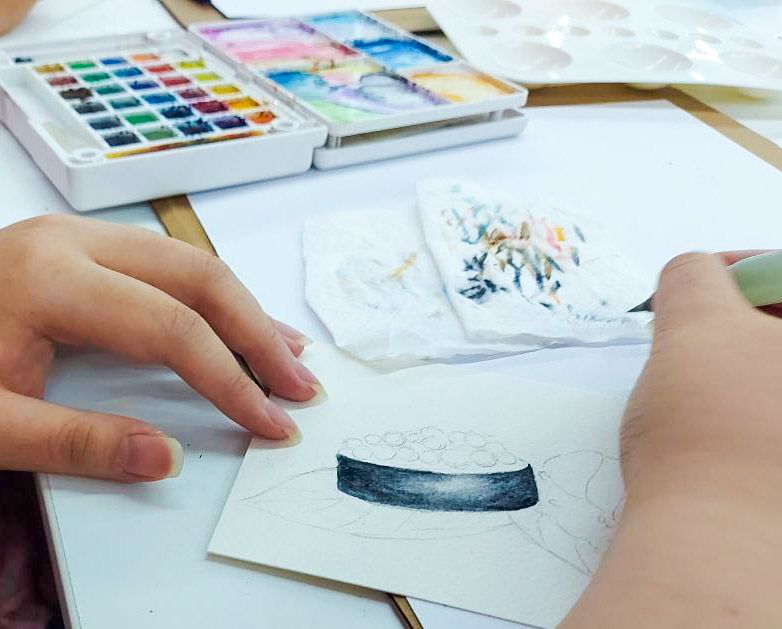
Watercolour paper, as Mr Joseph explained, is thicker than conventional drawing paper, with a coarse yet soft texture to absorb water and paint better. It was also nice to hold, invoking a real sense that our inner-artists had awoken, and stirring up anticipation for the moment when we could finally put brush to paper, and bring life to the scrumptious sushi we had sketched.
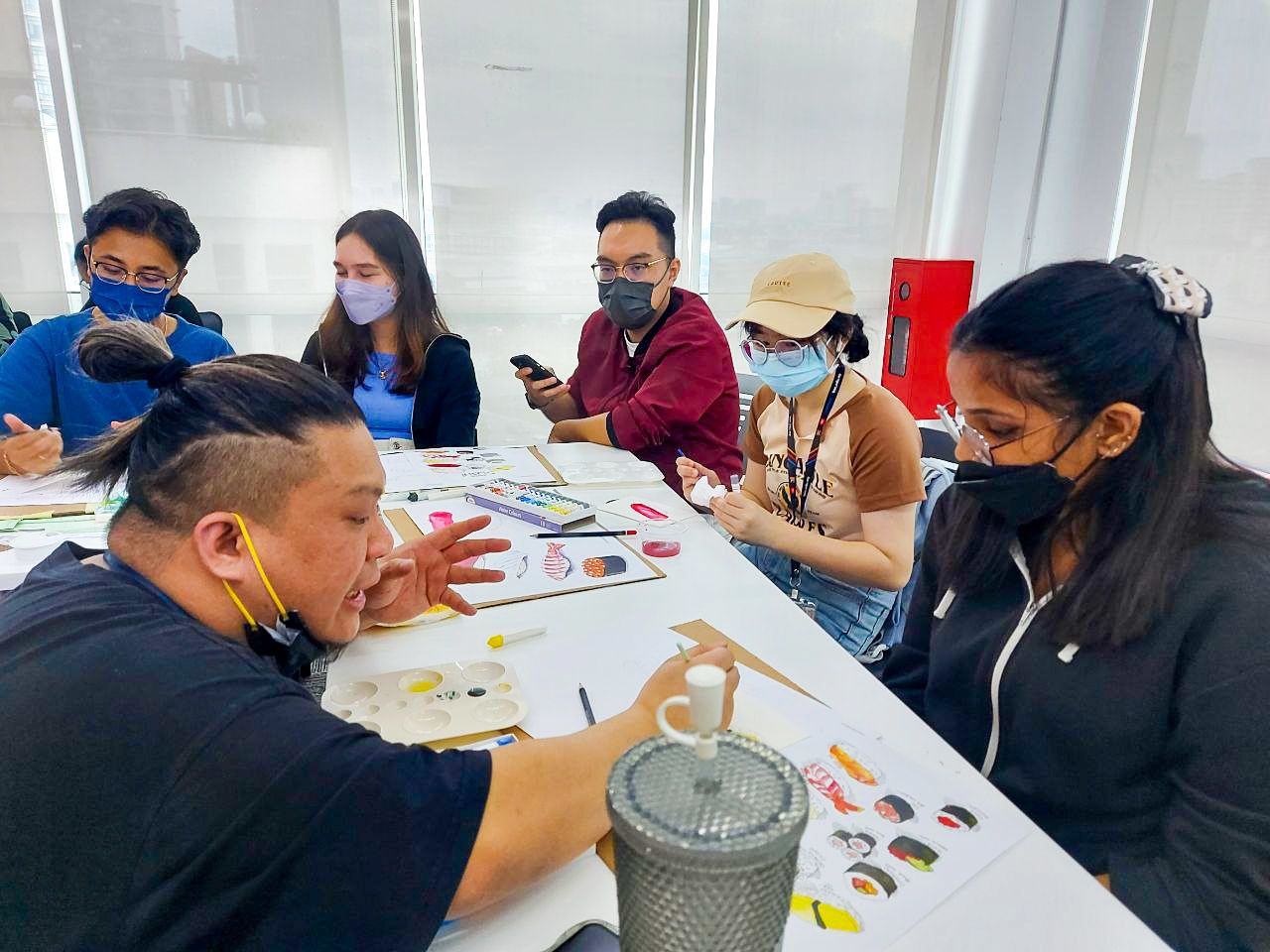
We were taught two fundamental techniques of watercolour painting, the first being the ‘wet-on-wet' technique of adding wet paint to wet paper, ideal for building, blending, and creating the soft washes and tones that give watercolour art its signature look.
Just as rice is the backbone of building a delicious roll of sushi, getting the hang of this technique was essential in understanding the basics of colour mixing.
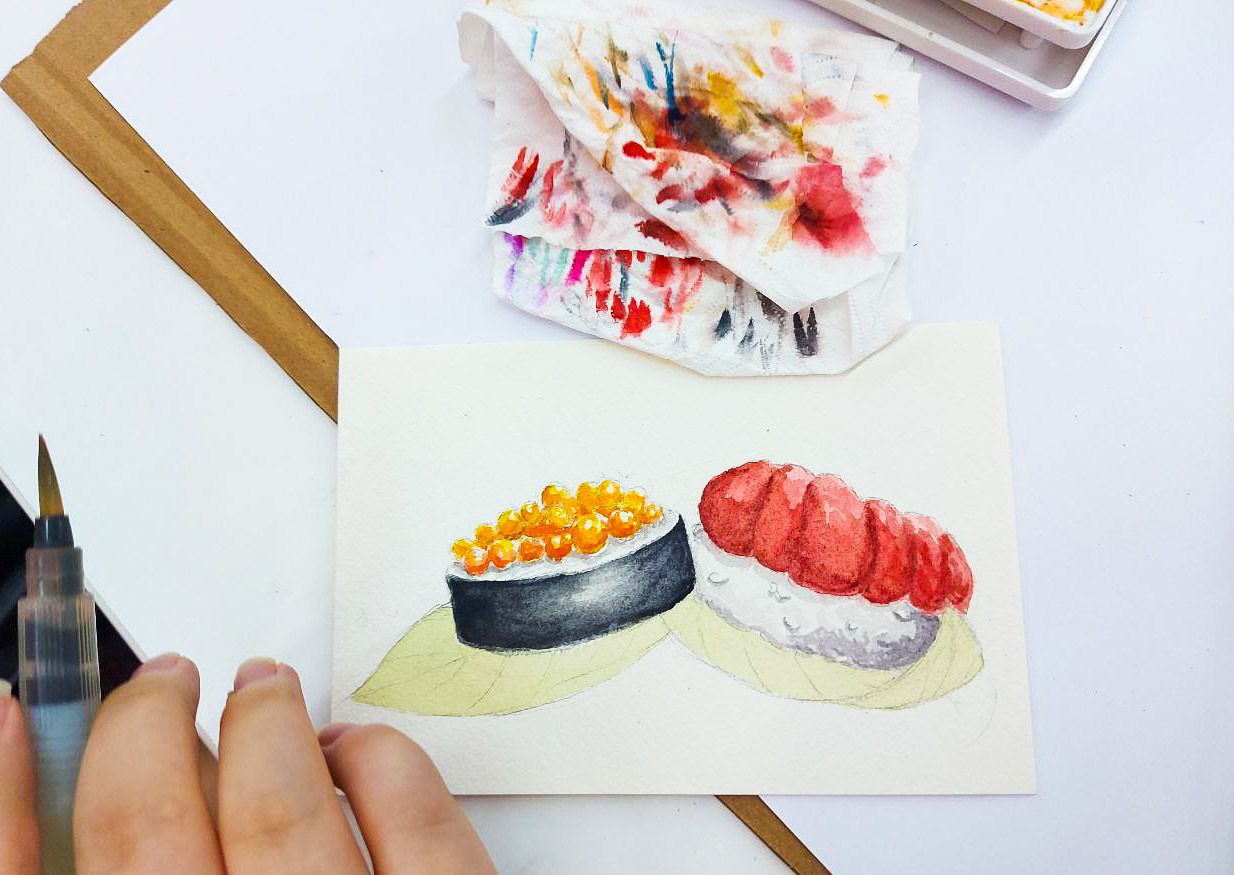
The second technique learned during our painting session was the ‘dry-on-wet' technique. As aptly put by Mr Joseph, this technique would test our courage, since the wet paint would now be applied on to dry paper, leaving less room for error. Unlike the previous technique, ‘dry-on-wet' painting is better suited for creating vibrancy and pigmentation.
Painting with the ‘dry-on-wet' technique gave us more control over the placement of our colours, helping us create more distinct tones of light and shadow in our artwork. Each pop of colour added was reminiscent of the popping of ikura in your mouth.
Even though watercolour painting is an activity which can sometimes be considered unforgiving, Mr Joseph was encouraging as always, offering tips and critiques to elevate our artwork in a jovial manner.
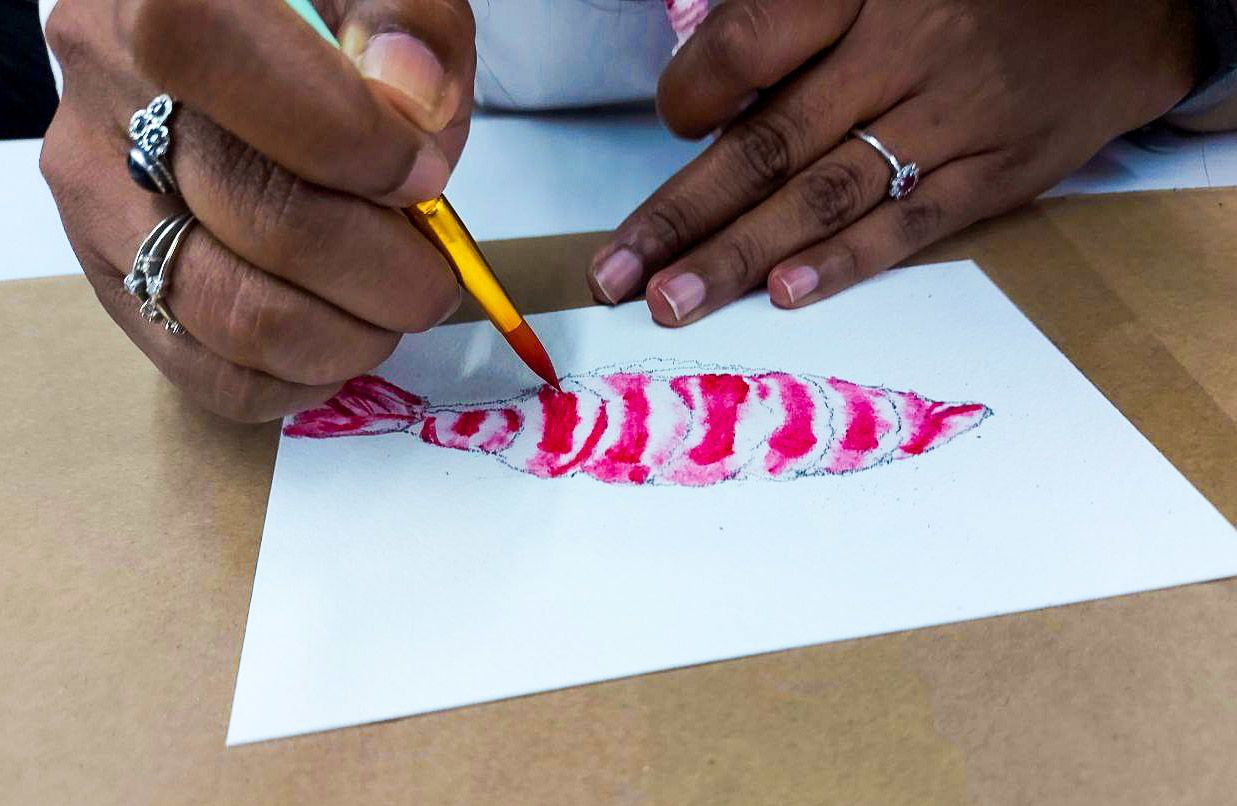
Watercolour Painting 101 was an informative and enjoyable workshop, which allowed us to get creative and explore the technical side of watercolour painting with fun, relatable subject matter. A BAC Skills Club programme accessible to anyone: whether they were looking for a potential hobby, a fun break from a long day, or to learn more about watercolours and art - this session got us to expand our creativity and play different.
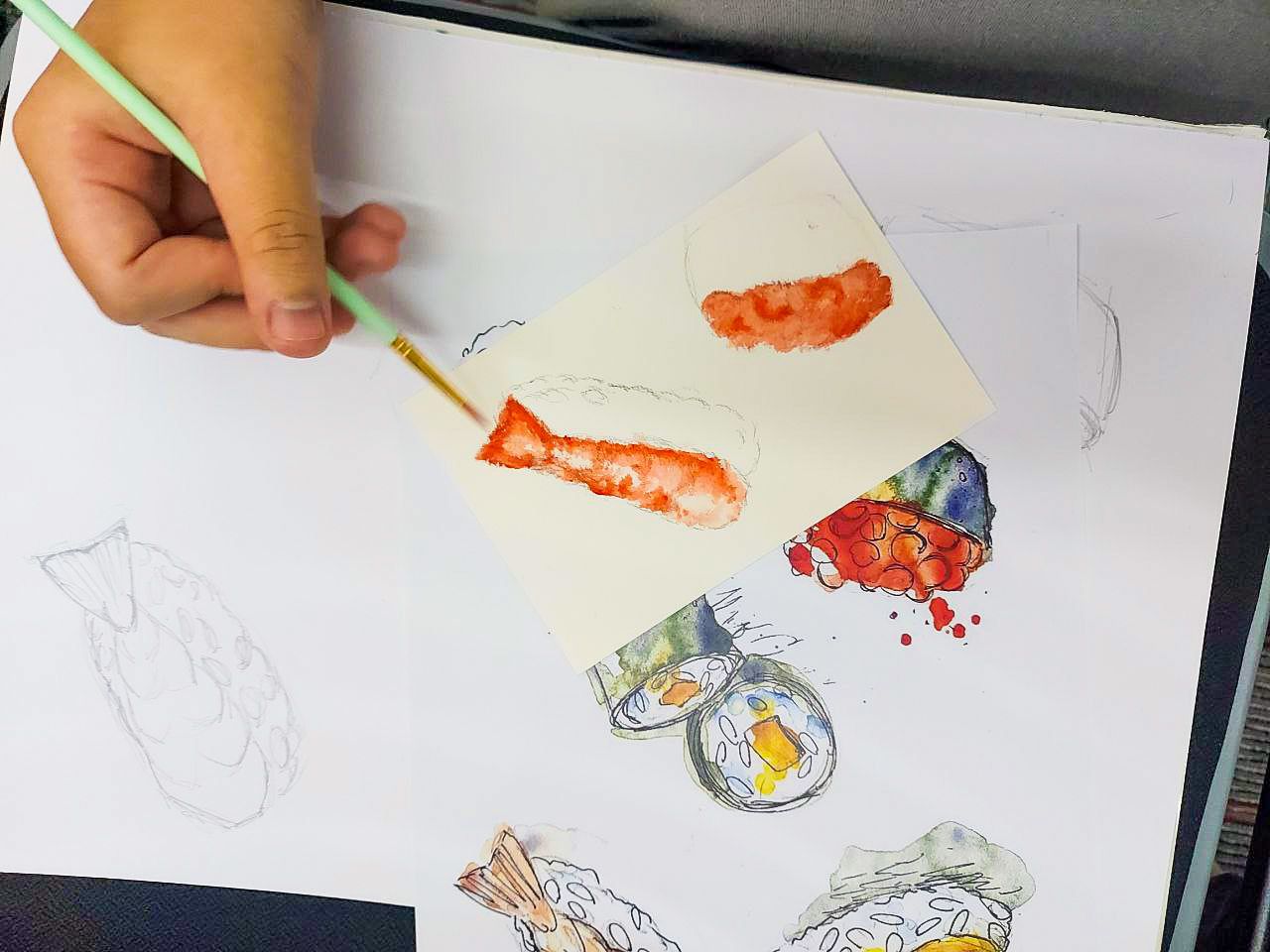
Item 1 of 12

